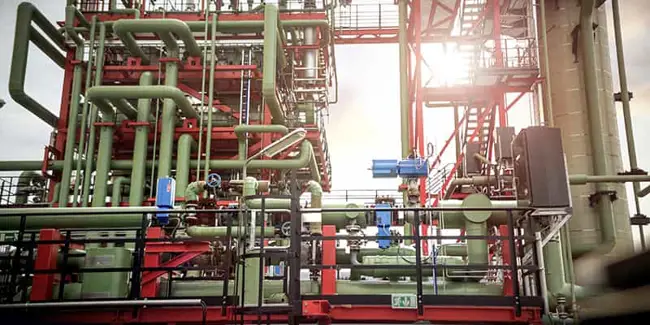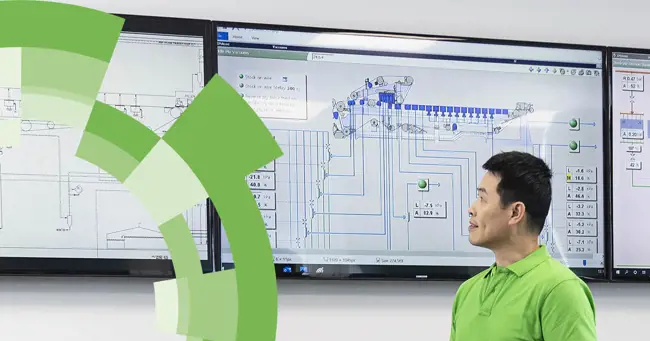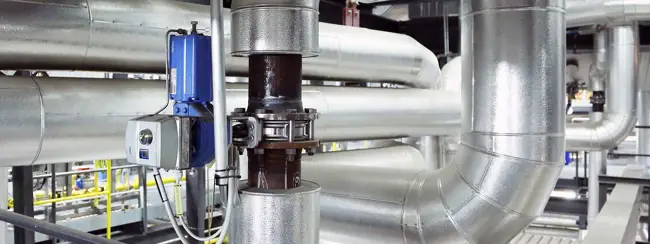Capture the benefits of Industrial Internet without the capital spending
Oct 12, 2023
Does your maintenance engineer want to identify poorly performing valves? Are troublesome loops frustrating your process operator? Or perhaps your finance manager is insisting on raising overall productivity? Then harnessing the Industrial Internet could be the route to improving all-round plant performance.

The Industrial Internet or sometimes referred as Industrial Internet of Things (IIoT) has been around for quite some years now but – despite the benefits that can be realized -relatively few process plants such as oil and gas facilities, pulp and paper mills, etc, seem to be utilizing its full potential. Mr Koti has formed this opinion after many years of interaction with clients far and wide. As he states, “Perhaps one in three of all customers I visit are planning or have indeed already implemented digitalisation in their plants. Yet, while companies are keen to make capital investments allowing us to focus on providing customizable solutions.” The reasons for this are many and varied, continues Mr Koti, “Sometimes companies are interested in IIoT but simply lack knowhow in investing in the right solution. Others may be hampered by knowledge compartmentalisation and diversified investments. Whatever the reason, companies are missing out on the real benefits that IIoT can deliver. For example, a superior process control, reduced cost of operation, improved product quality, etc.”
Leverage existing data
Mr Koti is therefore determined to help spread the message about the benefits of IIoT. And the good news is this technology is more easily achieved and at less cost than might be thought. “The IIoT is a valuable tool for all types of plants, including greenfields but also existing facilities. Moreover, the capital investment is often modest. In many cases, plants can leverage their existing process data via installed smart devices such as valves, positioners and instruments. That way, they can build a solution to identify issues, the process controls, and operations. It is all just a matter of understanding where and how to focus your tools and personnel.” Asked if he can back up this statement, Mr Koti draws on research on process facilities that indicates that up to a third of all valve controllers may be in manual, a similar number of loops can have poor tuning, whilst an equal number of valves might be suffering from mechanical issues. Oscillation, too, is more widespread than might be thought. These are issues for which digital tools are valuable.
IIoT implementation can address the plant’s current issues. It can target the most pressing problems and aim to fix these before turning to priority two issues, etc. Using digital tools, you are analysing the data, identifying the bottlenecks in the operations, and thereby identifying the root cause of plant upsets.
states Mr. Koti He continues, “It is however important to realise that each plant is unique. In a pulp and paper plant, for example, the manual operations loops associated with the paper machine process are often running efficiently but those in the pulping process unit typically suffer more issues.” The question which then arises, is whether plants can implement new digital solutions on their own or whether calling in third-party experts is recommended. The answer, states Mr Koti, “depends on the chosen target, the plant complexity and the internally available expertise.” “Implementation depends on which key performance indicators (KPIs) have been set up. It can be energy savings for a sustainability, reliability management, a production increase or perhaps reduced downtime. This often depends on who you ask – the plant manager, the maintenance team leader, etc. In all cases, the plant personnel ideally need to partner with someone who can define such KPIs and show an achievement path. Digital tools and services can be leveraged to reduce waste, save energy and chemicals, and streamline the work for plant personnel.”
Combining data streams
Whilst discussing data, Mr Koti stresses the need to consider all data flows in a process facility. “Typically, we distinguish two types of data. First there’s the process data and secondly smart data. Process data is usually directed to the process operators, whilst smart data is delivered via protocols to the maintenance or reliability engineers. This approach may sound logical but misses a huge opportunity, namely leveraging the advantages of combining both data sets.” Summing up, Mr Koti says that a successful IIoT strategy is based on three elements: digital tools, expert services (from both the customer and vendor sides) and finally incorporating best practices. “IIoT may sound intimidating but the steps required are straightforward enough. If required, my colleagues and I are on hand to offer consulting services for each KPI that customers may have. For example, we can provide services such as digital tools for process optimisation, asset management, predictive maintenance, and prescriptive analysis on valves. Moreover, our team can provide long-term monitoring of data on behalf of clients. That is especially valuable for plants that are more complex or have a larger installed base of valves and actuators.” But the first step to benefit from the IIoT is always simple and clear, emphasizes Mr Koti. “Whether you are a maintenance engineer, a plant owner or a process operator looking to implement IIoT, just call up colleagues from various disciplines, set up a team discussion and establish your goals!”
IIoT implementation in a nutshell
These five steps will enable plants to start implementing digital tools, states Mr Koti:
- Have your plant team identify technical and business KPIs that you wish to accomplish with a definite timeframe
- Understand your installed base: make, model, vendor, criticality matrix for operations. Check maintenance, communication interfaces and data availability on a digital platform
- Access performance data for these assets - failure incidence, frequency of repairs, etc
- Build a small data model with the above data. Understand the areas of improvement. (This step may require external investment in digital tools.)
- Apply the best practices to achieve the KPIs defined and incorporate them into the routine
Meet Mr Koti
Text by David Sear, KCI Publishing. This article was originally published in Valve World India & Middle East September 2023 issue.



